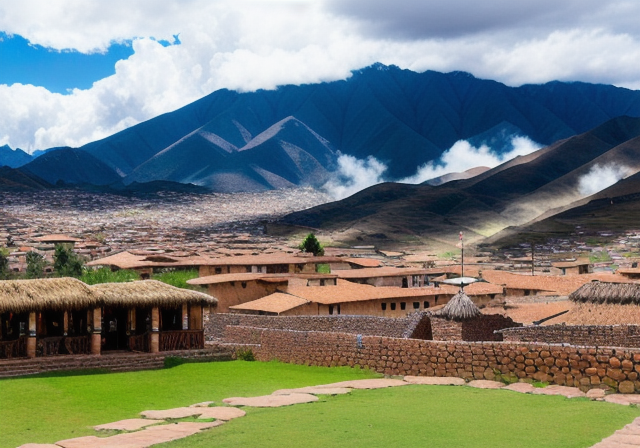Introduction
Cusco, the ancient capital of the Inca Empire, is a city steeped in history and culture. Nestled in the Andes Mountains of Peru, Cusco attracts visitors from around the world with its impressive ruins and colorful festivals. In this article, we'll explore Cusco's rich history, from its founding by the Incas to its colonization by the Spanish.
Cusco, also known as Qosqo in Quechua, was the heart of the Inca Empire and an important political, religious, and cultural center. The city was founded by the legendary first Inca emperor, Manco Cápac, in the 13th century. With its strategic location in the mountains, Cusco played a central role in the expansion of the empire and served as the starting point for the famous Inca road, the Inca Trail, which led to the citadel of Machu Picchu.
During the height of the Inca Empire, Cusco was a grand city with majestic temples, imposing palaces, and a growing population. Inca architecture, characterized by precisely fitted polished stones, can be admired at sites such as the Qoricancha, or Temple of the Sun, and the ruins of Sacsayhuamán. These impressive constructions are testament to the Incas' advanced engineering knowledge and the importance of the cult of sun in your culture.
With the arrival of the Spanish led by Francisco Pizarro in 1533, Cusco's history took a dramatic turn. The city was conquered and sacked, and many of the Inca buildings were destroyed to make way for colonial churches and palaces. Even so, traces of Inca architecture can be found blended with Spanish influence, such as the famous Cusco Cathedral and the Church of La Compañía de Jesus. This blend of architectural styles is one of Cusco's unique characteristics and reflects the fusion of Inca and Spanish cultures.

Cusco, the ancient capital of the Inca Empire, was not only an important political, religious and cultural center, but also a place of intense trade and cultural exchangesThe city served as a hub for numerous trade routes connecting different regions of the vast empire. The Incas were known for their impressive road network, stretching thousands of kilometers and allowing the rapid movement of messengers and goods between provinces.
Another important aspect of Inca culture in Cusco was the writing system known as "quipu." Quipus consisted of strings of different colors and sizes tied in intricate ways, used as accounting records and to transmit information between rulers and provinces. Although not an alphabetic form of writing, quipus were essential for the administration of the empire and efficient communication between its parts.

After the Spanish conquest, Cusco underwent an intense process of colonization and Christianization. The Spanish built churches and convents over ancient Inca temples, incorporating elements of European culture into the existing architecture. The Cusco Cathedral, for example, was built over the palace of the Inca Wiracocha, and the Church of La Compañía de Jesus was built over the ancient temple of the sun god.
Furthermore, Cusco also became a center for the production of religious art during the colonial period. Many churches were decorated with magnificent altarpieces and retables, carved from wood and adorned with gold leaf, representing a unique synthesis of Inca and Spanish artistic influences.
Currently, the city of Cusco is considered a World Heritage Site by UNESCO and continues to be one of the most popular tourist destinations in South America. Visitors can immerse themselves in the rich history and culture of the region, exploring Inca ruins, admiring colonial architecture and participating in traditional festivals such as Inti Raymi, which celebrates the winter solstice with colorful celebrations, dances and rituals.
Conclusion
The history of Cusco is one fascinating journey Through time, from its founding as the heart of the Inca Empire to its colonization by the Spanish. The city harbors vestiges of the grandeur of the Inca past, blended with the influence of Spanish culture, making Cusco a must-see destination for history and architecture lovers. Furthermore, its colorful festivals and rich cultural tradition attract visitors from around the world, making it a true treasure of world heritage.
Lucas Wanderlust has a tireless spirit of adventure, always seeking new travel experiences. Fascinated by the world and the possibility of exploring unknown destinations, he fell in love with the sense of freedom and self-discovery that traveling alone provides. With a backpack on his back and a heart open to the unknown, Lucas embarks on exciting journeys, where each destination becomes a unique chapter in his life story. He gives himself body and soul to the magic of solo travel, inspiring others to follow in his footsteps and discover themselves through adventure.







